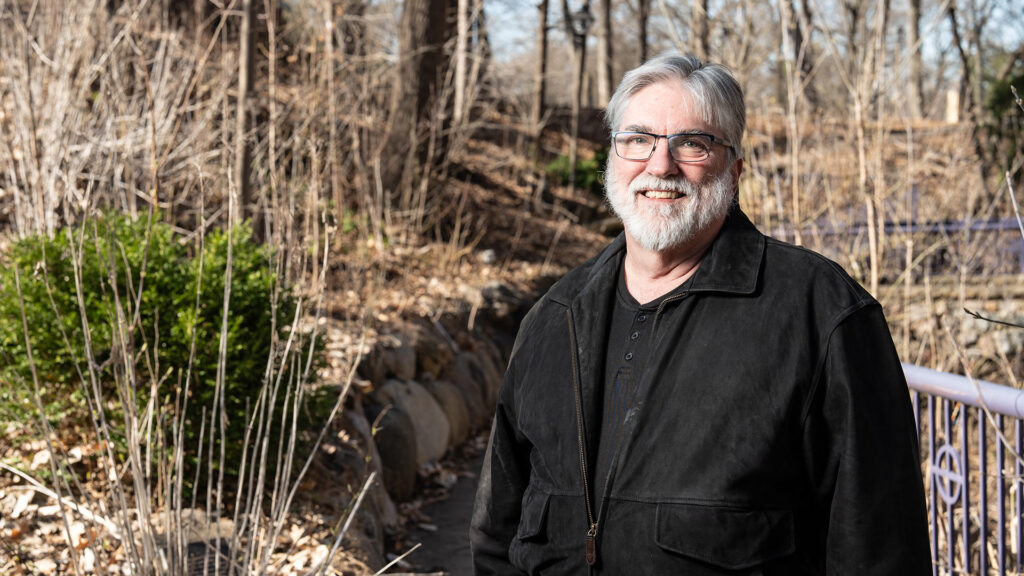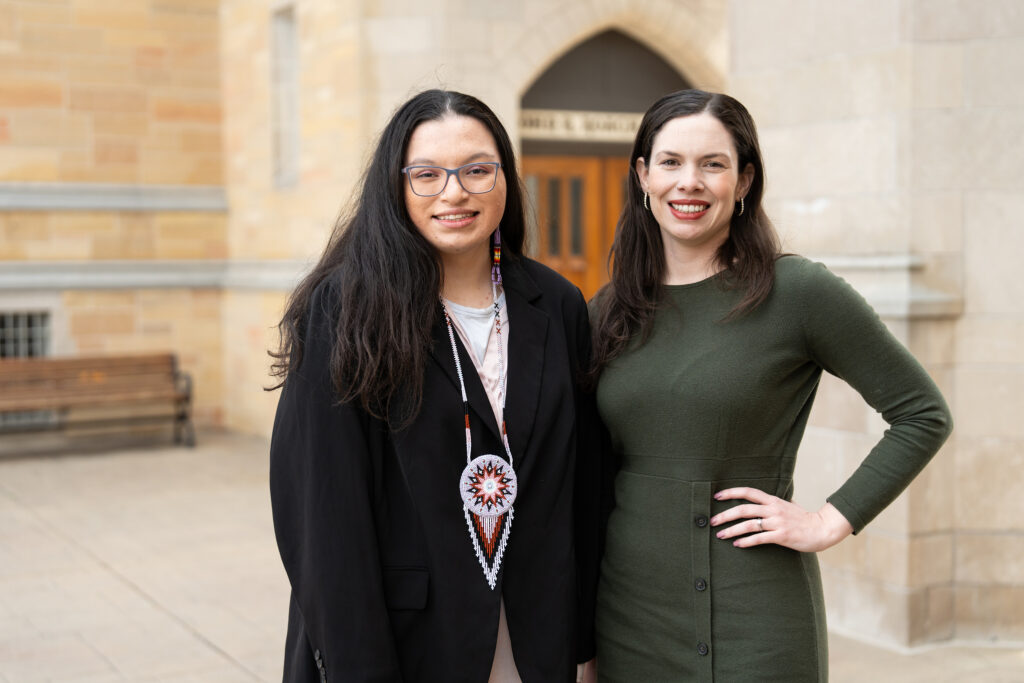At the start of Dr. Joanna Klein’s Microbiology and Health course this February, St. Thomas students were assigned the ultimate biology treasure hunt. Instead of rubies or gold bars, their search was for something much more valuable: dirt.
Topsoil is far from flashy, and yet, with just the right amount of luck, it could yield a priceless bounty. These budding microbiologists were hoping that within their hauls of soil, sourced from front yards and campus quads (legally, documented and with permission, of course), there could be a solution to one of the 21st century’s greatest challenges..
Put more simply, these lab students are searching for soil bacteria, of the antibiotic-producing variety. Antibiotic-resistant infections are one of the biggest health threats to modern medicine, and as bacteria find new ways to survive, it’s up to microbiologists to find new ways to keep them at bay.
Which brings us back to Klein’s lab, now full of dirt samples and plenty of bacteria. After growing their bacteria in dozens and dozens of petri dishes, today students were testing their microscopic finds to see just how good they might be at producing antibiotics.
Klein’s microbiology students are hoping to provide answers for the drug development pipeline. At the end of the semester, they’ll send their findings to the Tiny Earth collaborative, which coordinates antibiotic discovery from university research across the country.
“The students really enjoy the project – It’s meaningful for them to engage in researching something that’s so important in the field that they want to go into,” Klein said. “It’s easy for them to understand the problem, but then to be active in finding a solution is particularly powerful.”

While this research project does have lofty aspirations, its more humble contribution will undoubtedly be skilled scientists ready to carry out their own investigations. Each lab student in Klein’s course is learning the skills necessary to hit the ground running as a microbiologist right after graduation.
“Research is definitely one of those high-impact learning experiences,” Klein said. “You are asking questions, answering the questions, troubleshooting, and doing critical thinking, communicating. You get it all in research.”
The project has been so popular with students that many have elected to keep their bacteria-filled petri dishes around a little longer. An advanced course, Biochemistry and Genetics of Pathogens, allows lab students to continue the journey, dissecting their soil bacteria at the most basic of levels, their DNA.
“It feels very cool doing this work, especially knowing that we’re contributing to a much larger picture,” Maggie Mernik ’23 said. “If we can better understand bacteria, we can contribute to putting an end to the whole antibiotic resistance crisis.”

Mernik, a biology major, didn’t want the research to end in class. And so, she’s partnered with Klein on an independent project, studying how a particular strain of bacteria can turn off and on its antibiotic properties.
“It’s cool to be able to ask questions, and plot a path to get those answers,” Mernik said. “I’ve never had a project like this before, where I’m asking the questions and I have the resources to be able to get there.”
In the search for antibiotic answers, Klein’s passion for soil bacteria is clearly catching across the university. An advanced chemistry course hopes to tackle soil bacteria in the coming months. And next fall, nursing students will also join Klein’s Microbiology and Health course, where they too, will be asked to go find their own little sample of dirt.

That little sample of dirt is truly little and precious. Only a teaspoon or so is necessary to isolate enough bacteria to grow it in the lab. And yet, scientists believe they could be racing against time. Topsoil is being lost at large rates in agriculture, while pollution also threatens the bacteria themselves.
“We need to be thinking about living sustainably and conserving our natural resources, one of which is soil,” Klein said. “The next pharmaceutical could be in the soil that we’re losing, and that is eroding.”
Until that discovery is made, Klein says she’ll keep working with students, hoping that together, they’ll play a part in digging up answers.
“Doing research with students is why I became a professor,” Klein said. “And doing this work, having this opportunity, is something I’m really grateful for.”







